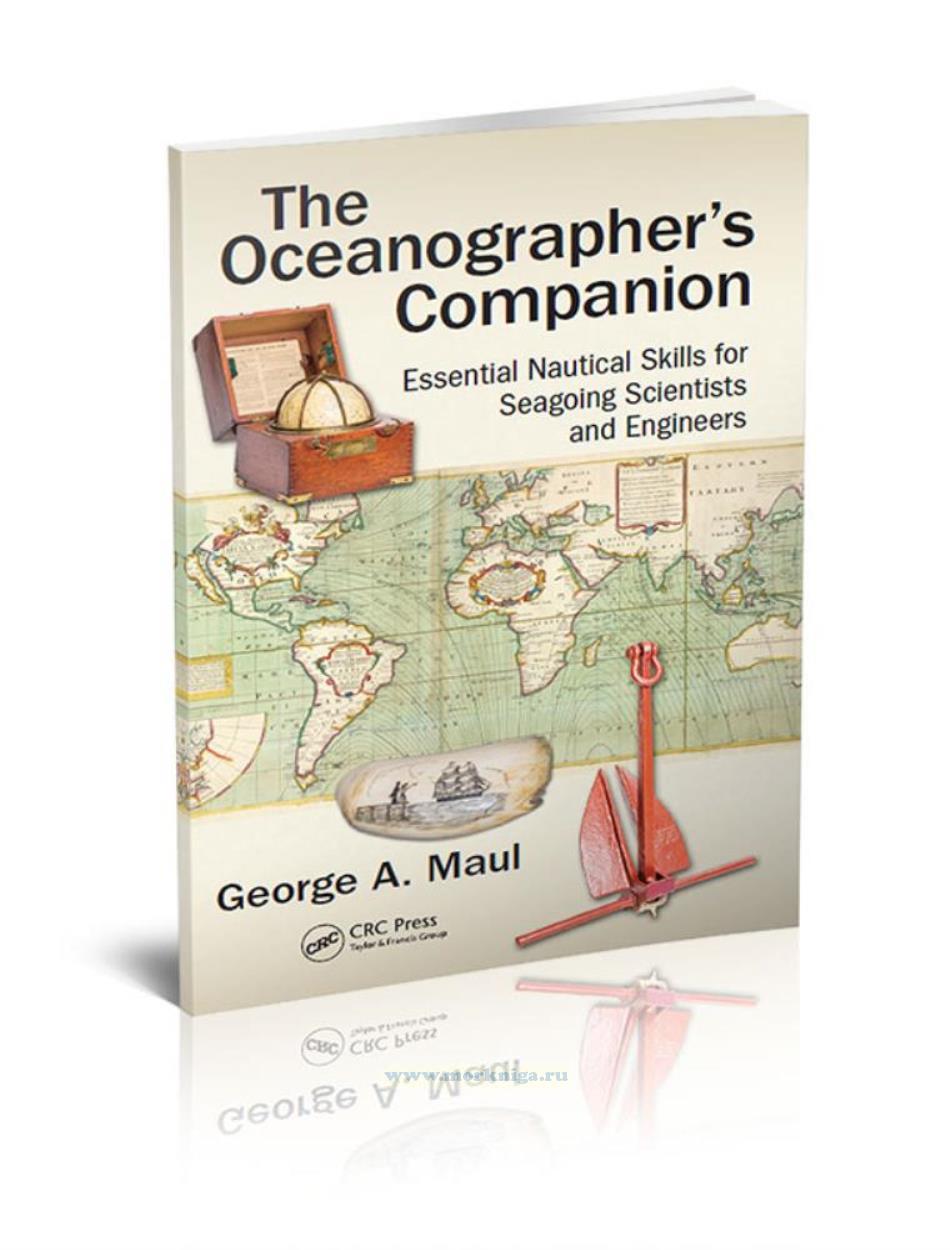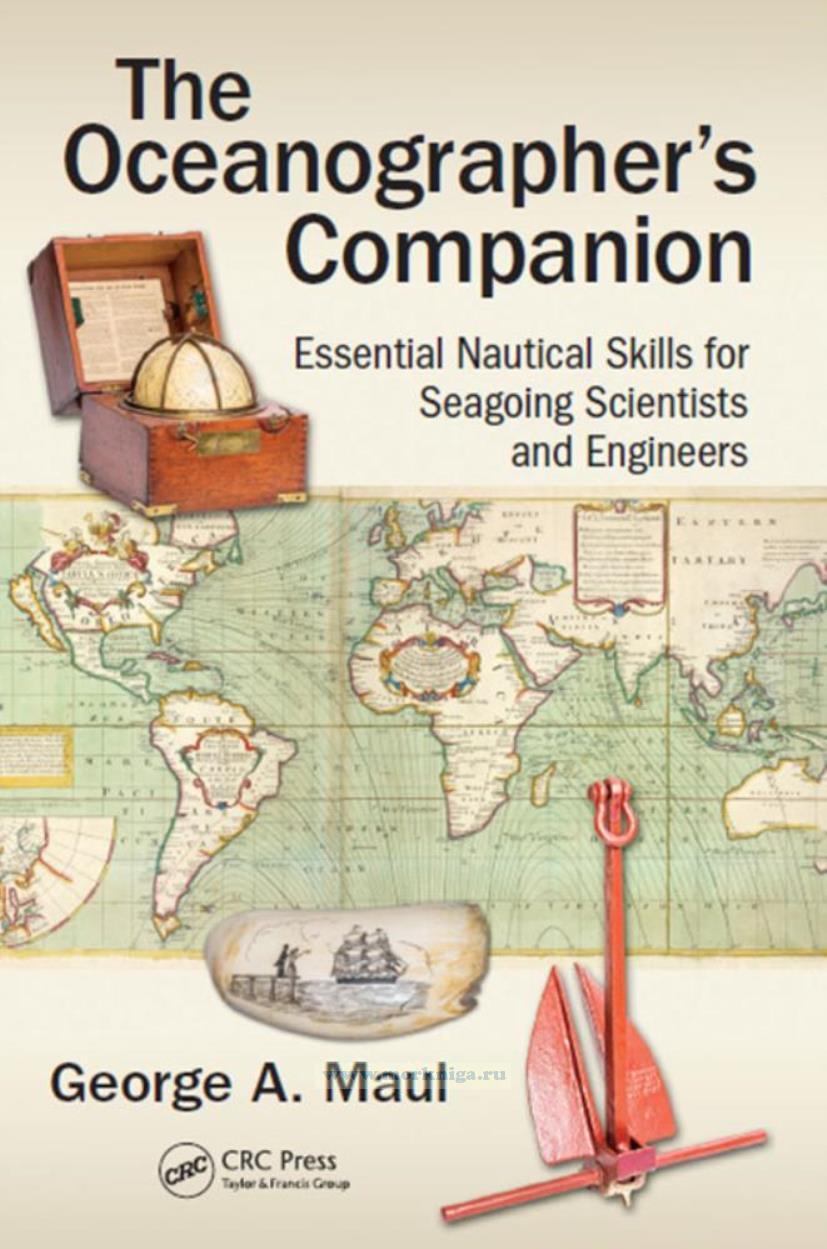The OceanographerвАЩs Companion. Essential Nautical Skills for Seagoing Scientists and Engineers/–°–њ—Г—В–љ–Є–Ї –Њ–Ї–µ–∞–љ–Њ–≥—А–∞—Д–∞. –Ю—Б–љ–Њ–≤–љ—Л–µ –Љ–Њ—А—Б–Ї–Є–µ –љ–∞–≤—Л–Ї–Є –і–ї—П –Љ–Њ—А—Б–Ї–Є—Е —Г—З–µ–љ—Л—Е –Є –Є–љ–ґ–µ–љ–µ—А–Њ–≤
–Ш–Ј–і–∞–љ–Є–µ –љ–∞ –∞–љ–≥–ї–Є–є—Б–Ї–Њ–Љ —П–Ј—Л–Ї–µ
When you embark on a research vessel, you enter a world very different from the shore-side laboratory or classroom.
Many of the words commonly used ashore are not used on-board, and вАЬold saltsвАЭ will judge your вАЬsavvyвАЭ accordingly. Learning the language of going to sea is not only important for proper communication, but also for your safety and well-being.
This handbook is written to acquaint the landlubber with ships, their traditions, construction, and the work done for you by the officers and crew. It is not meant as a treatise in seamanship, but rather to prepare you for a successful and safe research cruise. It is a вАЬhandbook,вАЭ so toss it into your seabag along with foul-weather gear, closed-toed shoes, sunscreen, work clothes, and reading materials. Be observant! Why did the captain or chief marine engineer do this or that?
What do those flags mean? Where is your fire and emergency muster station? Lifeboat station?
Can you tie a few essential knots, such as a bowline? How do you pronounce вАЬbowline?вАЭ
Writing this handbook is the output of teaching oceanographers, ocean engineers, marine meteorologists, and other students at Florida Institute of Technology, and it is for them and their fellow future shipmates from all marine science institutes that this is intended. Bon Voyage!
Contents
Preface
Acknowledgments
Author
1. Research Vessels of the Past and Present - A Brief History of Seagoing Science
2. Seagoing Skills - Crews, Scientific Party, Logistics, Emergencies, First Aid, and Cardiopulmonary Resuscitation
3. Research Vessel Construction - Terminology, Equipment, and Machinery
4. Stability and Trim - Tonnage, Safety of Life at Sea, Maritime Organizations, and Sea Change
5. Science Spaces - Open Deck, Wet Lab, Dry Lab, Computer Lab, Stateroom, Lockers
6. MarinerвАЩs Compass - True and Magnetic, Variation, Deviation, Correcting, and Uncorrecting
7. Coastal Navigation - Nautical Charts, Geographic Positioning, Marine Electronics, and Instruments
8. Rules of the Road - Classes of Vessels, Lights, Day Shapes, Maneuvering, and Collision Avoidance
9. Marlinspike Seamanship - Lines, Knots, Splices, Blocks, Tackle, Cleats, and Fairleads
10. Trailerable Boats - Hubs and Hitches, Trailering, Boat Ramps, Launching, Recovery, and Anchoring
11. Handling Equipment - Superstructure, Deck Machinery, Wire Ropes, Clothing, and Commands
12. Oceanographic Stations - Preparation, Time, Position, Weather, Personnel, and Ancillary Data
13. Cruise Planning and Execution - Project Instructions, Foreign Waters, Geographic Names, and Tides and Tidal Currents
14. Underwater Operations - Planning, Equipment, Safety, Diving, American Academy of Underwater Sciences Certification, and Underwater Archeology
15. Celestial Navigation - Spherical Trigonometry, Spherical Triangles, Azimuth, Sextant Altitude, Amplitude, and Line of Position
Appendix A: Timeline of Important Events in Ocean Science and Engineering
Appendix B: Glossary of Important Terms for Seagoing Scientists and Engineers
Appendix C: Answers to Exercises for Seagoing Scientists and Engineers
Index

